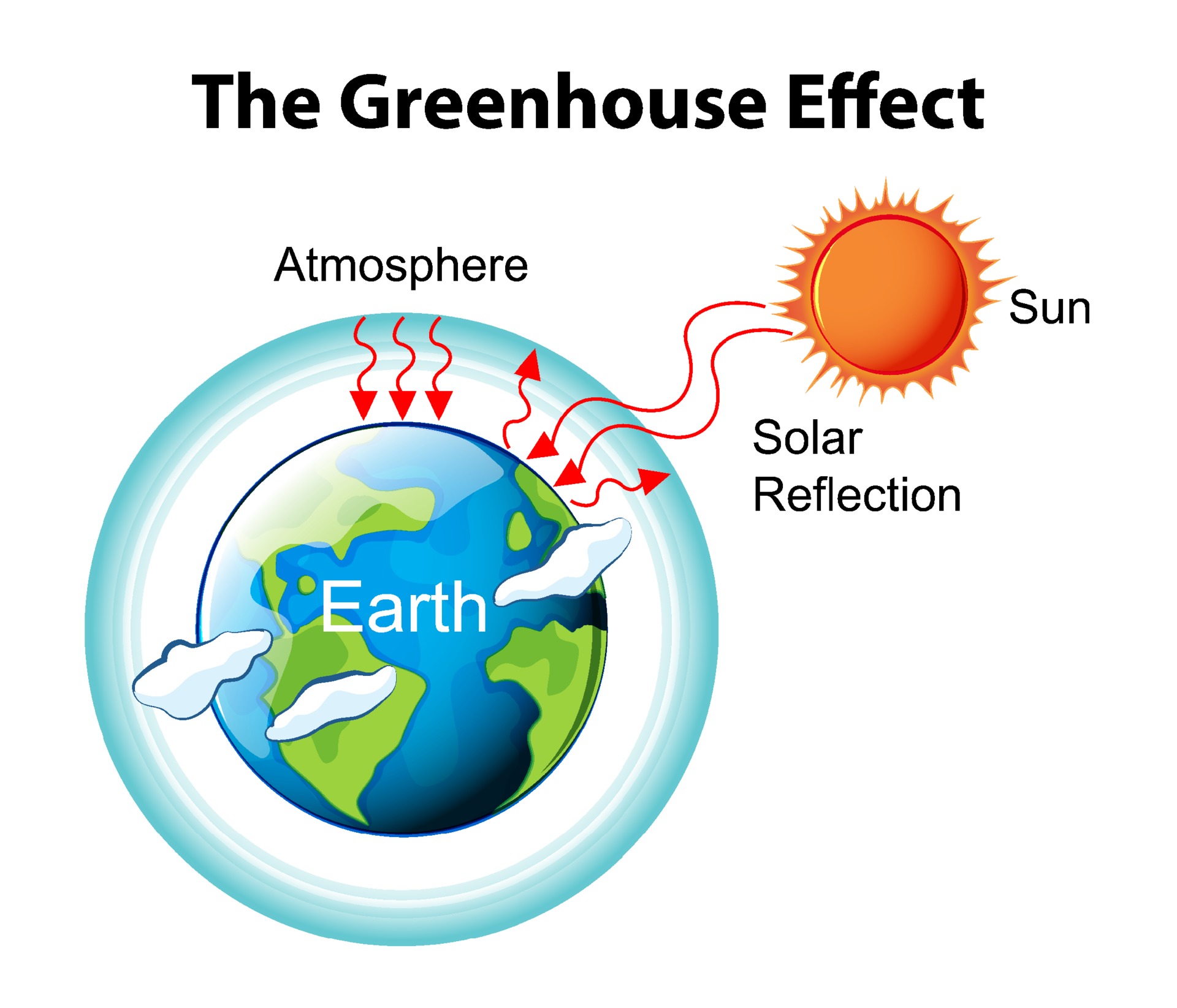5 things you should know about the greenhouse gases warming the planet
Table Of Content

NASA explores the unknown in air and space, innovates for the benefit of humanity, and inspires the world through discovery. "I’ve concluded that repairing our relationship across the political divide can only be done with someone else at the helm,'' Yousaf told reporters in Edinburgh, Scotland's capital. To learn more about what is the greenhouse effect, its definition, causes and effects, keep visiting BYJU’S website or download the BYJU’S app for further reference. Nitrous oxide used in fertilizers is one of the contributors to the greenhouse effect in the atmosphere.
Greener tourism: Greater collaboration needed to tackle rising emissions
Releasing greenhouse gases intensifies the greenhouse effect, and increases Earth’s average air temperatures (also known as global warming). Hover over or click on the icons to learn more about these human causes of change and how they influence the greenhouse effect. Over the last century, burning of fossil fuels like coal and oil has increased the concentration of atmospheric carbon dioxide (CO2).
Where do greenhouse gases come from?
Biomass and the environment - EIA
Biomass and the environment.
Posted: Wed, 17 Apr 2024 07:00:00 GMT [source]
Saturn's distant moon Titan, which has a thick nitrogen atmosphere with about a thousand times greater concentration of methane as Earth, is also subject to the greenhouse effect. As the planet's surface heats up, it releases some of the infrared energy that it had absorbed, but that energy doesn't make it back out of Earth's gaseous atmosphere. Instead of shooting back out into space, the infrared energy closely hugs our planet and, therefore, raises Earth's overall temperature. This is similar to how a human-built glass greenhouse works, trapping heat from the sun to keep plants warm in the winter. The atmosphere near the Earth's surface is largely opaque to longwave radiation and most heat loss from the surface is by evaporation and convection. However radiative energy losses become increasingly important higher in the atmosphere, largely because of the decreasing concentration of water vapor, an important greenhouse gas.
Radiative balance
Indeed, the GWP for these gases can be in the thousands to tens of thousands, and they have long atmospheric lifetimes, in some cases lasting tens of thousands of years. Since the Industrial Revolution of the late 1700s and early 1800s, people have been releasing larger quantities of greenhouse gases into the atmosphere. The greenhouse effect happens when certain gases, which are known as greenhouse gases, accumulate in Earth’s atmosphere. Greenhouse gases include carbon dioxide (CO2), methane (CH4), nitrous oxide (N2O), ozone (O3), and fluorinated gases. NASA has observed increases in the amount of carbon dioxide and some other greenhouse gases in our atmosphere.
Greenhouse gases such as methane, carbon dioxide, nitrous oxide, and water vapor significantly affect the amount of energy in the Earth system, even though they make up a tiny percentage of Earth’s atmosphere. Solar radiation that passes through the atmosphere and reaches Earth’s surface is either reflected or absorbed. Reflected sunlight doesn’t add any heat to the Earth system because this energy bounces back into space. Some scientists have suggested that we could terraform the surface of Mars by sending "factories" that would spew water vapor, carbon dioxide and other greenhouse gases into the air.
Greenhouse Effect
What is climate change? A really simple guide - BBC.com
What is climate change? A really simple guide.
Posted: Thu, 08 Feb 2024 08:00:00 GMT [source]
For example, ISO is an International Standard for greenhouse gas accounting and verification. It provides organizations with a framework for measuring and reporting greenhouse gas emissions, as well as for verifying emission reductions and removals. This multi-part standard is an important tool to ensure transparency and uniformity across global efforts to combat climate change. To avoid unpredictable and uncontrollable changes in climate, humanity needs to act swiftly and in coordination, implementing comprehensive strategies to reduce carbon emissions, conserve biodiversity, and transition towards sustainable living globally. An important tool for informed action is to monitor Earth’s temperature and greenhouse gas emissions carefully. Reducing our greenhouse gas emissions will require significant effort at the international, national, and local levels.

Environmental Protection Agency (EPA), methane accounted for more than 12 percent of human-generated greenhouse gas emissions in 2021. While methane can come from natural sources like wetlands, more than half of all global methane emissions come from human activities like natural gas production and livestock-based agriculture. Today, climate change is the term scientists use to describe the complex shifts, driven by greenhouse gas concentrations, that are now affecting our planet’s weather and climate systems. Climate change encompasses not only the rising average temperatures we refer to as global warming but also extreme weather events, shifting wildlife populations and and habitats, rising seas, and a range of other impacts. Even though only a tiny amount of the gases in Earth’s atmosphere are greenhouse gases, they have a huge effect on climate. Sometime during this century, the amount of the greenhouse gas carbon dioxide in the atmosphere is expected to double.
Arrhenius first refers to this “hot-house theory” of the atmosphere—which would be known later as the greenhouse effect—in his work Worlds in the Making (1903). The greenhouse effect is also expected to warm the worlds of other star systems. Many astronomers speak of a narrow habitable zone around a star — the area where a planet would be at the perfect distance to maintain liquid water on its surface, between 0.95 and 1.4 times the Earth-sun distance. A thick atmosphere of molecular hydrogen, which is a potent greenhouse gas, could potentially give a world clement temperatures even if it were 15 times farther from the sun than Earth is. Billions of years ago, when the sun was cooler and dimmer, Venus may have had a temperate climate that could have allowed for liquid water oceans on its surface.
This paper presents an in-depth exploration of the current state of research on Magnetocaloric Effect (MCE) materials, examining various types of MCE materials and their respective potentials. The focus is particularly directed towards perovskite manganite materials due to their numerous advantages over other materials. Additionally, crucial parameters defining the MCE properties of perovskite manganite materials are discussed comprehensively, both at a fundamental level and in detail.
If enough greenhouse gas emissions could be generated, the atmosphere might start to thicken enough to retain more heat and allow plants to live on the surface. Greenhouse gases, or “GHG” for short, are atmospheric gases that trap heat from sunlight reflecting off the Earth’s surface. This is a naturally occurring phenomenon and helps keep our planet at a suitable temperature for life. However, since the start of the industrial revolution, humans have been releasing additional greenhouse gases into the atmosphere, altering the gas composition of our air. The greenhouse gas effect is caused by certain gases called greenhouse gases. The molecules of greenhouse gases absorb and reemit thermal radiation, much like a tuning fork absorbs and reemits sound waves tuned to its frequency.
The exchange of incoming and outgoing radiation that warms the Earth is often referred to as the greenhouse effect because a greenhouse works in much the same way. Earth is constantly bombarded with enormous amounts of radiation, primarily from the sun. This solar radiation strikes the Earth's atmosphere in the form of visible light, plus ultraviolet (UV), infrared (IR) and other types of radiation that are invisible to the human eye.
In this case, the rate of thermal radiation emission to space is greater than the rate at which thermal radiation is emitted by the surface. Nitrogen is not a greenhouse gas as it cannot absorb heat and contribute to the greenhouse effect. However, excess nitrogen in the environment in a reactive form – which comes from the use of synthetic fertilizers, the discharge of wastewater or the combustion of fossil fuels – pollutes land, water and air. The compounds created when nitrogen reacts with other substances, for example nitrous oxide, also exacerbate climate change. By increasing the concentration of greenhouse gases in the atmosphere, we’re amplifying the planet’s natural greenhouse effect and turning up the dial on global warming. However, human activity is resulting in the increased emission of so-called greenhouse gases (GHGs) which, unlike other atmospheric gases such as oxygen and nitrogen, becomes trapped in the atmosphere, unable to escape the planet.
Greenhouse effect, a warming of Earth’s surface and troposphere (the lowest layer of the atmosphere) caused by the presence of water vapour, carbon dioxide, methane, and certain other gases in the air. Of those gases, known as greenhouse gases, water vapour has the largest effect. With the increase in population, the utilization of fossil fuels has increased.
Some of the heat from the sun is absorbed by the seats, the dashboard and the carpeting and floor mats. Atmospheric CO2 levels have increased by more than 40 percent since the beginning of the Industrial Revolution, from about 280 parts per million (ppm) in the 1800s to 400 ppm today. The last time Earth's atmospheric levels of CO2 reached 400 ppm was during the Pliocene Epoch, between 5 million and 3 million years ago, according to the University of California, San Diego's Scripps Institution of Oceanography. At our current pace, the world will blow its entire “carbon budget” by around 2030.
Altogether, this cycle of absorption and re-radiation by greenhouse gases impedes the loss of heat from our atmosphere to space, creating the greenhouse effect. Increases in the amount of greenhouses gases will mean that more heat is trapped, increasing the amount of energy in the Earth system (Earth’s energy budget), and raising Earth’s temperature. This increase in Earth’s average temperature is also known as global warming. Greenhouse gases are gases—like carbon dioxide (CO2), methane, and nitrous oxide—that keep the Earth warmer than it would be without them. The reason they warm the Earth has to do with the way energy enters and leaves our atmosphere.
Greenhouse gas molecules release some of this thermal radiation back to Earth’s surface, contributing to the build-up of heat. A simple greenhouse effect diagram can be helpful to describe the greenhouse effect, and what greenhouse gases are doing to the Earth’s atmosphere. At night, when the earth cools down the heat is radiated back into the atmosphere. During this process, the heat is absorbed by the greenhouse gases in the earth’s atmosphere.
Comments
Post a Comment